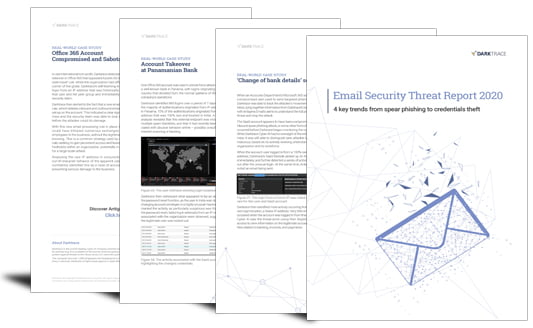Case Study:
Email Security Threat Report 2020

Email and collaboration platforms are the connective tissue of most businesses and organizations, where information is shared, plans are hatched, and alliances formed. Yet, human-driven as it is, email often represents the ‘weakest link’ in an organization’s security strategy.
While traditional gateway tools seek to filter out malicious emails on entry, their reliance on lists of ‘known-bad’ IPs, domains and file hashes to determine an email’s threat level is extremely limiting. A rule-based approach can often identify known spam and other low-hanging fruit, but it fails to keep pace with attacker innovations.
Spear phishing, impersonation attacks, and account takeovers, in particular, remain fruitful ways that cybercriminals can infiltrate an organization. Increasingly targeted email attacks of this kind, which overcome the limitations of traditional defenses, are a significant challenge for security teams today.
This report deep-dives – with extensive real-world case studies – into the 4 highly sophisticated attack categories that routinely bypass organizations’ tarditional defenses:
- Spear phishing & payload delivery
- Supply chain account takeover
- Social engineering & solicitation
- Compromised employee credentials





